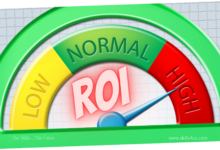
How To Deal With Employees Resisting Development And Training
Frequently, we think that the fault lies with employees who do not want to develop themselves, learn new skills, or do something new. Knowing that these employees are really at fault, this case can be an opportunity for you as a future leader and manager. Dealing with employees resistant to development and training can be an opportunity for you to develop a growth and development roadmap for these employees and chart their career paths.
Reasons for employee resistance
Knowing why your employees resistant to development and training is not easy. But it is well worth your time and effort and will help you become an outstanding leader by addressing and dealing with employees resistant development. Therefore, it must consider that the process of change and development will encounter resistance from some of your employees from all managerial and professional levels.
Some factors influence employees’ inflexibility and resistance to development and training:
- Lack of Motivation: This could be anything from not knowing how their job fits into the bigger picture of the organization’s goals to receiving or not receiving negative feedback. So remember that not all employees are motivated by the same things.
- Lack of knowledge: Employees may not understand what they are supposed to do. They may lack the skills to do the job and don’t want to admit it. Also, there may be a fear of failure associated with this.
- Lack of trust: Employees may have a history of mistrust, lack of support from the manager or teammates, or confidence in making decisions.
To overcome these obstacles, your employees need to know that you care about them not only on a personal level but as a business leader. From here, you should honestly tell your employees that you are committed to their success. One of your most significant accomplishments as a distinguished future manager is developing your employees so that everyone succeeds.
To check, you can follow the following steps that will help you in that:
1. Boost confidence
Transparency with your employees is the fastest way to develop and enhance trust. As communication with your team is the cornerstone of establishing a relationship of trust. As a future leader and manager, you probably have many of the same concerns as your team. So it would be best if you talked to them about your strengths and weaknesses. And how you can work together and help each other work on them. If it seems to employees you have a hidden agenda and are not being honest with them. It will be challenging to train and develop them.
2. Share goals
All of your employees should know what they are working for and its mission and goals. Note that the work teams and individuals within the organization must have their plans. So let your employees know how their talents, abilities, and skills contribute to achieving these goals and why they are essential to the team.
3. Define the motives
Connect, sit down, and have one-on-one and group conversations with your employees to learn what motivates them. Many employees can find passion and inspiration in different things and places. Whereas, without connecting with them and identifying their motivations, you can’t anticipate what motivates one employee over the others on your team.
4. Develop relationships
You have successfully taken your previous steps, built trust, shared the organization’s goals, and told them how their jobs play a role in the bigger picture of the organization. Now, it’s time to follow in your footsteps through coaching and continue to build relationships.
Remember that training can sometimes be embarrassing or intimidating for some employees, especially if the employees have many bragging rights. They can feel exposed and appear to their co-workers uncomfortable when discussing strengths and weaknesses. So for those employees who feel uncertain and pain, you need to stay close to them. And build a good relationship with them. It should also come back constantly and remind them of the importance of development and training and their contribution to achieving their goals and objectives. Because those goals are an essential part of their career, it is necessary to discuss them regularly and determine what works and what doesn’t. Also, don’t forget to find a way to acknowledge their accomplishments. And what motivates them, and then thank and appreciate them.
It all boils down to building a good relationship with your employees first. You can’t start with them by saying to them: “You need training… I am here to develop and train you”. Note that the development and training process takes time and begins with trust and transparency. So you need to communicate and talk to them, understand what motivates them. And set clear goals to start the process and continue to reach the desired goal. Your employees want to know why the development and training process is so important to them.



